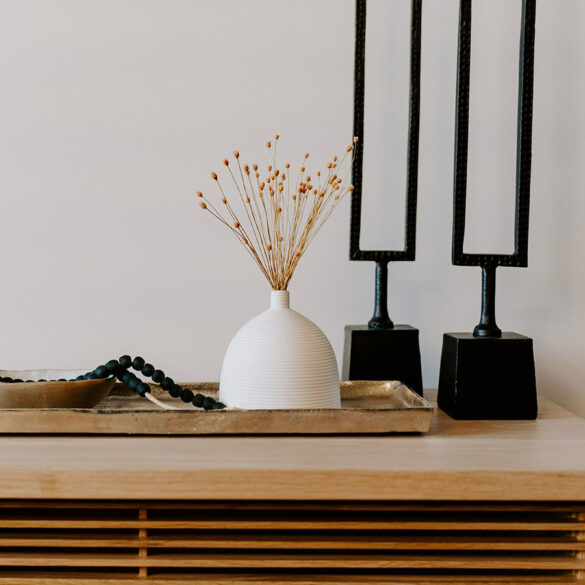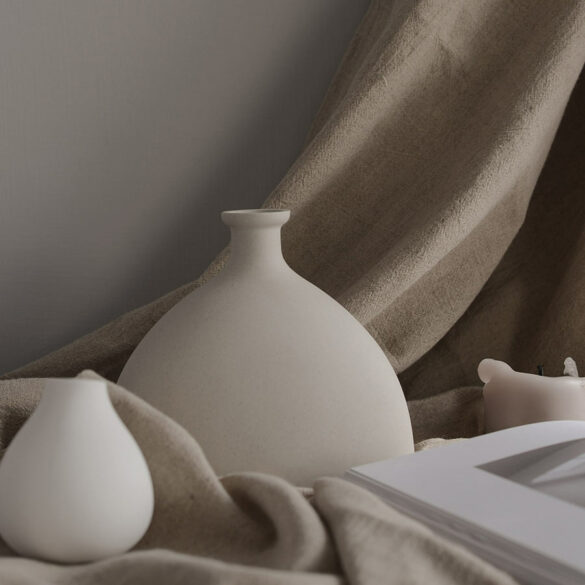The kitchen, often regarded as the heart of the home for its practicality, is commonly defined by its utilitarian features like appliances, countertops, and storage solutions. However, in our quest to articulate its functionality, we mustn’t overlook a crucial factor that profoundly influences our kitchen experience – the color palette.
The psychology of kitchen color is one fascinating aspect of kitchen design that is drawing researchers’ interest globally. People now seek to know the relationship between the mood and kitchen colors. Research has validated claims that colors used in our culinary space can control our mood, emotions, and even our eating habits.
Whether you are planning to remodel your kitchen or only desire to improve your cooking and dining experiences, understanding kitchen color impact may hold the key to creating a more harmonious and enjoyable culinary environment.
From the calming effects of soft blues to the energizing power of vibrant reds, this article uncovers the intricate interplay between color and psychology to help you make better decisions on color usage to boost your kitchen experience.
Common Kitchen Color Schemes
In interior design, different areas in the house have their preferred color schemes, and so does the kitchen. The common color themes used in kitchen design are neutral, warm, and cool.
- Neutral colors: These are a set of hues associated with naturally occurring shades. They are understated, subtle, and lack a strong chromatic intensity. The common examples of these colors are shades of white, brown, beige, gray, and black.
- Warm colors: These are hues associated with fire, sunlight, and warmth. They are considered powerful kitchen mood enhancers. Examples of such colors include red, orange, and yellow, along with their various tints.
- Cool colors: These are pigments associated with natural elements like water, sky, and foliage. Examples include blue, green, and purple.
Psychological Effects of Different Kitchen Colors on the Mood
Kitchen color psychology identifies how colors affect your mood and general disposition while occupying the kitchen. Here is a run-through of colors used in the kitchen and the emotional stimulation they have on you.
1. Warm Colors in the Kitchen
Generally, warm colors arouse a sense of warmth, energy, and coziness. More specifically, some warm colors and their effects on mood are as follows:
Red
Red is often associated with passion and excitement. When talking of color choice and mood, red provokes the strongest emotions. Its stimulating effect can be used positively to achieve the following results:
- Increase appetite
- Boost energy levels.
However, excessive use of red in the kitchen can increase stress and irritability. It is best to pair this vibrant hue with neutral colors to reduce its overbearing effect. Also, you can use it on areas like the kitchen island, accent wall, appliances, cabinets, and backsplash.
Yellow
Among the mood-altering kitchen colors, yellow is definitely one of the most impactful. It’s often associated with sunlight and warmth. Yellow has an uplifting effect and can:
- cheer you
- evoke the feeling of happiness and positivity
- stimulate your appetite
Yes, that’s why smiley badges are yellow. Commonly used for accent walls, having some yellow in your kitchen is an excellent way to bring light into your dining soul.
Orange
Orange gives your kitchen a sense of warmth and vibrancy. These attributes make it an excellent choice to promote social interaction and conversation in kitchens where gatherings occur. In all, yellow can influence mood by:
- Providing warmth and comfort
- Stimulating creativity
- Stimulating appetite
- Creating the festivity mood
Again, this color can be overstimulating and overwhelming if its presence is excessive. Using it with some neutral hues is better.
2. Neutral Colors in the Kitchen
Like other color types, neutral colors also have their kitchen design effects on mood. Generally, these colors create a versatile and welcoming atmosphere.

The following are some neutral colors and their specific impact on mood when used in the kitchen:
White
It is the most popular kitchen color. White has a decluttering effect and can make small spaces appear much larger. Additionally, it is associated with cleanliness and freshness, characteristics that everyone wants in the kitchen. On mood, white can have the following effects:
- Openness and airiness
- Serenity and calmness
- Comfort and stability
Although white is suitable for anything and any area in the kitchen, for colorful kitchens and emotions, endeavor to balance it with other colors to avoid the feeling of sterility and coldness.
Beige and Gray
Depending on the shade and other factors, beige and gray can significantly impact the mood of a kitchen user. A combination of beige and gray in the kitchen can be:
- Calming and welcoming
- Aid relaxation due to the cozy and cocooning appeal they have visually.
- Provide comfort and warmth for those who love a sense of enclosure.
Beige and gray are versatile and have a wide range of applications. Kitchen cabinets, countertops, floorboards, islands, etc., are examples of where you can apply the beige and gray. It is advisable to use the colors with white. This will balance and amplify its presence in your kitchen.
3. Cool Colors in the Kitchen
Cool colors create a sense of calmness, serenity, and coolness in terms of temperature. More specifically, some cool hues and their effects are as follows:
Green
The color evokes calmness, tranquility, and a sense of balance. It also stimulates a feeling of freshness and is associated with fresh and healthy foods, making it a suitable choice for health-conscious kitchens. Cabinets, walls, and countertops would be excellent segments to have as green.
Blue
Blue has a soothing effect on the mind and body. It is a calming and serene color capable of having the following influence on you:
- Appetite Suppression: significant for those who are on diet control
- Calm and tranquility: aids relaxation
- Stress reduction: has a soothing effect, making the kitchen a pleasant place for body and mind.
The portions of the kitchen where the blue color is perfect include countertops, backsplash, Kitchen Island, and open shelf.
Purple
It is one of the emotional kitchen colors because it evokes feelings of creativity, luxury, and uniqueness. Though not a common choice for kitchen design, having purple in your kitchen’s color theme can have the following effects on your mood:
- Arouse feelings of sensuality and romance.
- Create a sense of luxury and sophistication.
- Promote a sense of relaxation and calmness.
Also, note that purple can be quite dominant, so it is advisable to balance it with other neutral colors. You can use purple and its shades for lighting, accent walls, backsplash, and cabinets.
Conclusion
Understanding color psychology in kitchens may be the very thing you need to unlock the not-so-obvious uses of the kitchen. Seeing that color choices can influence your mood in the kitchen, you may want to consider what you want to achieve with your kitchen. Do you want the kitchen to be more relaxing, friendly, and cozy or enhance your appetite? You have the answers to these with the palette.
Most importantly, it’s crucial to know how to combine these colors correctly to get your desired effect. The excessive presence of some of these colors can be overwhelming and bring undesired effects. Overall, moderation and creativity is the key to getting the best from any color you’ve chosen. So go ahead and make your kitchen that haven you’ve always wanted. It’s just a few colors away.

